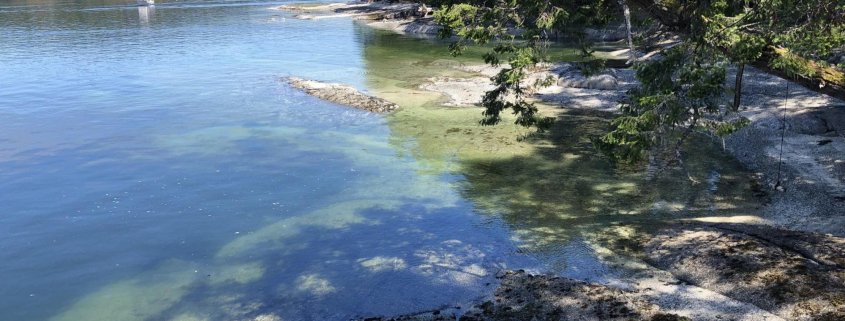
Canopy-forming kelp forests are globally recognized as one of the most structurally complex foundational ecosystems, playing an important role in maintaining marine food webs, buffering shorelines against erosion and contributing to carbon and nitrogen cycling. In coastal British Columbia, kelp forests have cultural relevance as historical navigation routes and as habitats for important food sources, particularly for coastal First Nations. Today, the cumulative effects of a warming climate, coastal development and sedimentation threaten marine species including kelps, which are recognized as ecologically significant species of priority in Canada. Loss of this critical habitat will greatly impact commercially valuable marine fisheries and at-risk or endangered species, resulting in large-scale ecological shifts and the loss of a way of life for many coastal communities.
Spatial temporal kelp resilience on the BC coast
In BC, the current status of bull and giant kelp species, and their future fate is unknown, due to insufficient research within the context of local environmental stressors and global-regional climate drivers of change. The goal of this project, led by Dr. Maycira Costa at the University of Victoria, is to determine the long-term (centennial, decadal and annual) distribution of canopy-forming kelp forests and define spatial-temporal resilience to abiotic and biotic drivers, in the context of climate change, to aid in local and regional management strategies.
This project is gathering historical data and using remote sensing technologies to determine the long-term distribution patterns of canopy-forming kelp forests and to define spatial-temporal resilience to environmental and biotic drivers.
The key questions include the following:
- How has the extent of canopy kelp forests changed over time (century to decades), and is there evidence of spatial-temporal resilience in the Strait of Georgia and Coastal BC? Where are suitable climate refugia in BC?
- What is driving centennial, decadal, or annual changes in the extent of kelp forests, and how do the interactions between local-scale stressors (i.e., sea surface temperature, biological predators) and broader-scale climate drivers (i.e., marine heatwaves, Pacific Decadal Oscillation, El Niño) impact kelp resilience across areas of coastal BC?
- What are the best knowledge mobilization tools for effectively translating generated knowledge into specific management plans for the benefit of coastal communities and the Province of BC?
This project is utilizing a unique, innovative research approach for the analysis of a rich dataset that considers long- temporal and large spatial scales, including historical kelp data from the 1850s, from the British Admiral charts; local-scale data from BC Government initiatives; contemporary remote-sensing imagery; regional climate datasets available since the late 1800s; and available abiotic and biotic data.
Anticipated outcomes and advancements will result in social, economic and environmental benefits for Canadians. For example, the identification of critical habitats or “hot-spots” of kelp resilience, areas at high risk for kelp loss and areas of potential target for restoration, will be integrated into ecosystem-based management strategies to inform Marine Protected Areas, spatial marine planning, kelp harvesting, and fisheries habitat management.
Find a summary of the latest results in this slide deck presented by Post Doctoral Researcher Dr. Alejandra Mora-Soto at the 2022 Salish Sea Ecosystem Conference and recent newsletter:



We are grateful for generous funding support for this project from the RBC Foundation.



